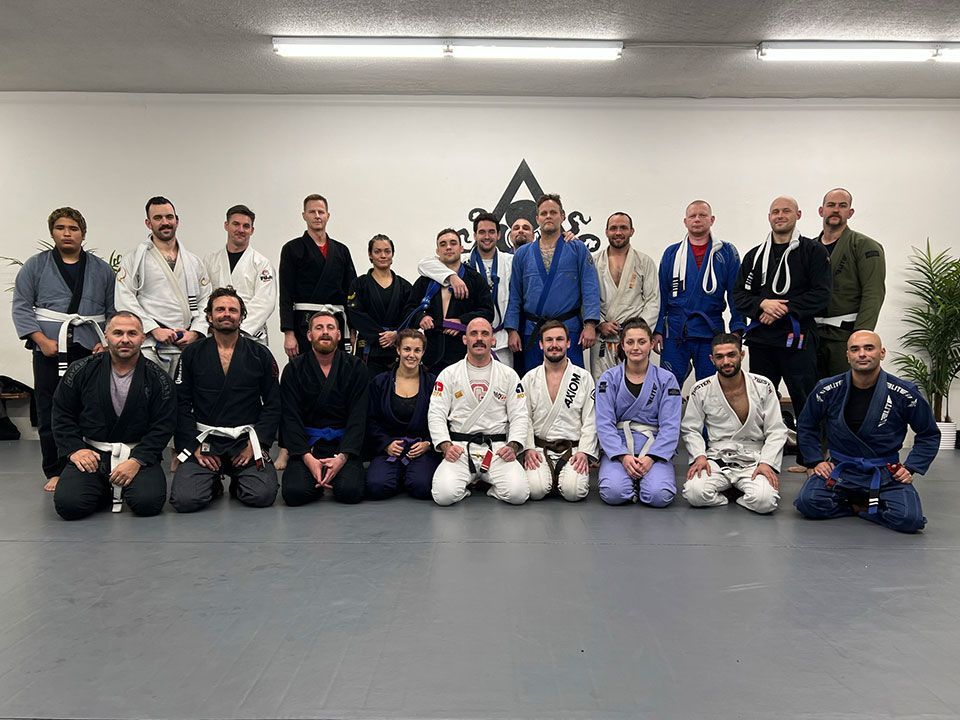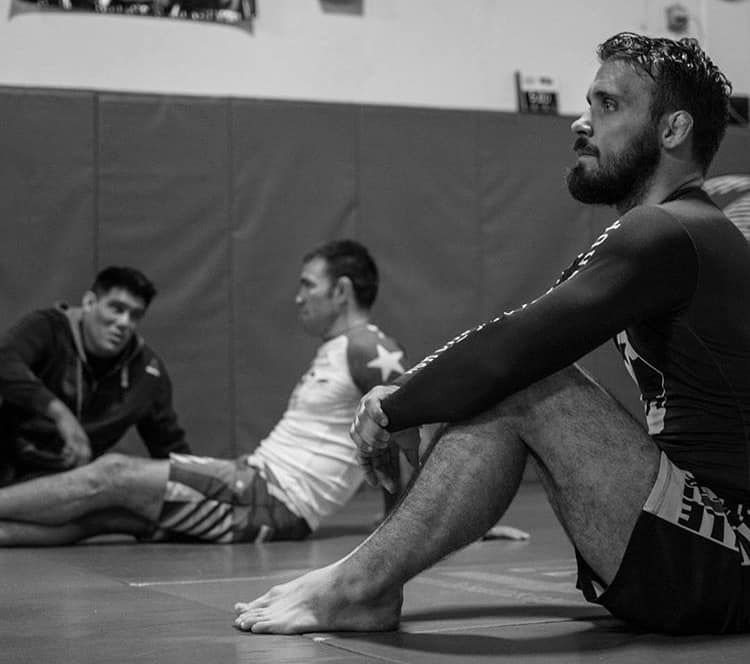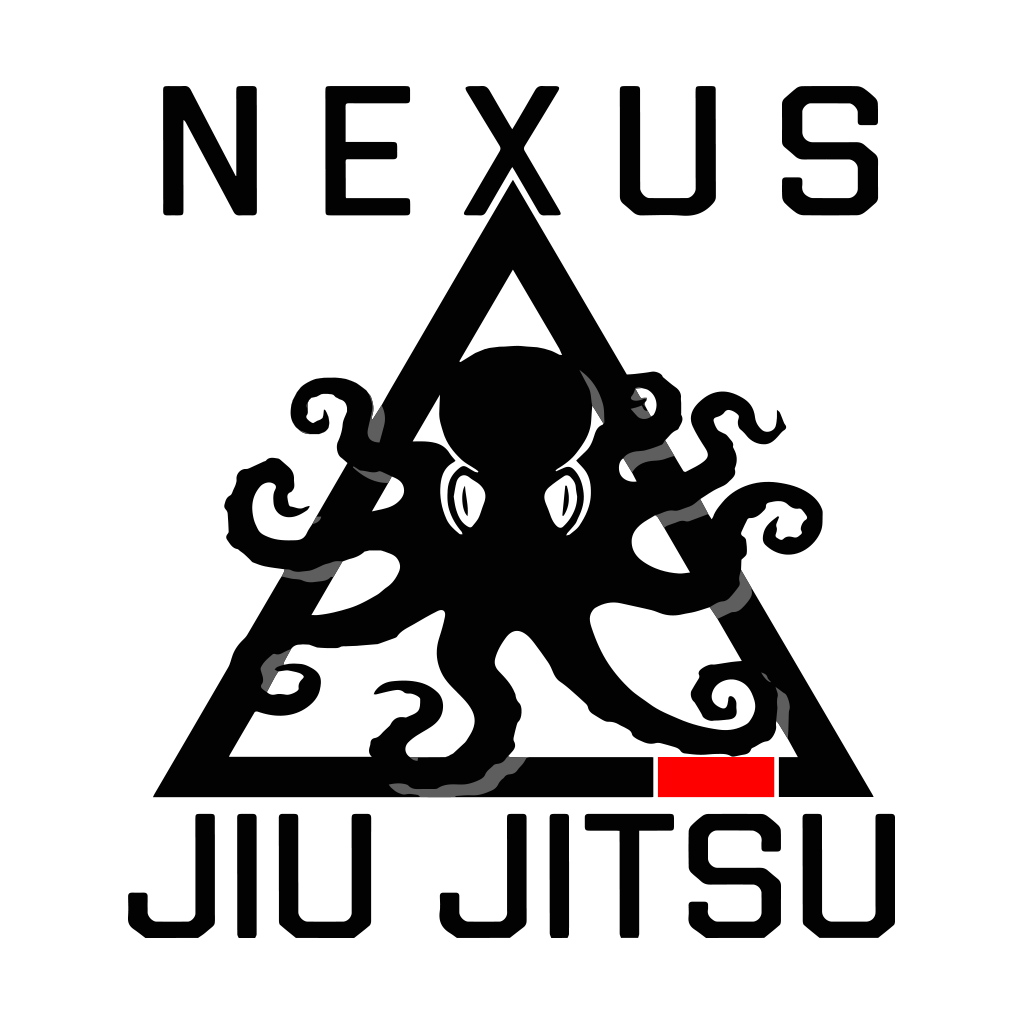NEXUS JIU-JITSU FEATURES

The Belt Levels
White Belts are learning the alphabet. They are just learning the shape of the letters and how to write them. Basically, white belts should be learning about and understanding position. What is guard, what is mount, etc. They need to start realizing the difference between bad and good positions. They need to be able to start recognizing when a bad position is coming and start working towards creating better, safer positions. Of course, as a snowball picks up debris as it rolls downhill and grows, so will white belts be learning submissions and submission defenses as they progress in their understanding of positions.
Blue Belts are learning words. They may not know all the letters yet or write them all perfectly and they will certainly be picking up some letters while they are learning words. But their focus is on building a foundation of words. Blue belts should be very proficient in their understanding of positions as well as knowing how to go from bad positions to good ones. They should also be able to realize when a bad position is formulating and be able to stop it from manifesting. Blue belts are also adding lots of submission defenses as well as some attacks. They should be primarily focused on positional awareness, creating good positions from bad ones and sub defenses.
Purple Belts are learning sentences. They should have a solid understanding of all of the letters. They may not know all of the words, especially the more dynamic and larger syllable words. However, they are well prepared to make sentences from the proficient amount of words in their repertoire. Purple belts are extremely proficient in positional awareness, creating great positions for attacks, escaping bad positions, recognizing when bad positions are being created and stifling their opponent’s offense. They are also very adept at submission defense and escapes and they are beginning to add lots of submission attacks. They are very attack oriented.
Brown Belts are writing paragraphs. They are lucid and proficient with their words and sentences. They are still picking up and perfecting words. They are experts at all letters and are exceptionally adept at sentences. The paragraphs are solid and can convey strong feelings. Brown belts need to be experts at position. They need to know how to escape bad positions, how to create positions of control, how to create positions for attacks, how to escape submissions and how to perform submissions. They should be experts in all the aspects of jiu jitsu. Escaping bad positions and controlling good positions with a heavy desire for the submission is where they should be.
Black Belts write poetry. They are experts in letters, they have an amazing arsenal of words, their sentences are eloquent, their paragraphs are beautiful and start to flow as a poem should. Black belts are experts everywhere but the difference between black belts and brown belts is that black belts start to create their own style. Black belts go back to the beginning and begin to start working on the intricacies and fine details of the positions. They refine their escapes. They perfect their control and attacks. They begin to add in their own style and create their own game.
Nexus Gym Etiquette
- Trim finger and toe nails.
- Don’t wear a smelly gi or a gi more than once without washing. Same for nogi attire.
- Don’t talk while a coach is talking/teaching.
- If you are training, don’t be the person that “coaches” someone while they are beating or submitting you. No one appreciates that and it makes you look like a sore loser. Focus, stay quiet, stay humble and enjoy the journey.
- If you are new or a lower belt, try to refrain from coaching. It is better to ask a coach that is present when there are questions or issues with a technique or position. That is what we are around for.
- Never, ever, ever, ever wear shoes on the mat.
- Wear shoes in the bathroom.
- 2-3 minute showers at the most.
- Respect elders and higher belts.
- Move for higher belts.
- If a higher belt asks for a roll or for you to move, respect it.
- High belts: respect everyone and treat them as you would want someone to treat your child or young family members.
- Greet each other and go out of your way to make newcomers feel welcome.
- Have integrity.
- Fight hard.
- Never give up.
- Don’t make excuses.
- Be punctual.
- Honor your word.
- Make your future self respect your present self.
- Leave your ego at the door.
- Have a student’s mind.
- Be polite.
- Always shake hands before and after a roll and be grateful to your partners.

GI vs NOGI
To gi or not to gi? That is the most common question from beginners of jiu jitsu. This particular question is only answered subjectively. Some people love and train way more in the gi. Others love and train way more nogi. Some people really dislike the gi and others really dislike nogi. Despite this difference in opinion, which is usually based on age, physical attributes, particular mentalities towards the sport/art and past history with individual instructors, there is a common ground that most people involved in jiu jitsu agree on, which is that training in the gi makes us more technical.
The gi is much slower, has a lot more handles to grab, creates a lot more friction, stifles a lot of explosiveness, slows down mega athletic individuals and requires a lot more technical prowess to successfully escape or perform particular movements.
Nogi caters more towards strong, athletic, explosive individuals with a lot of physical attributes such as flexibility or youth on their side. Applying a sweeping technique or submission of some kind in the nogi to a young, strong, explosive athlete is many times an exercise in futility. Doing the same move to the same person in a gi with all of the friction and handles can elevate the potential percentage of success by large margins. There are also many more techniques that are potentially possible in the gi that just don’t exist in nogi.
So, my long and short answer to this question is certainly both. Get a gi and train a lot in the gi but also certainly devote some time to nogi training as well. Most people believe that a gi isn’t practical in a self-defense aspect in today’s world considering that most people don’t walk around wearing kimonos in their daily lives. My argument for that is that jackets, sweatshirts, strong fabric shirts can work as a gi very easily. So, I always suggest getting a gi and learning both styles with a lot of energy directed towards the gi.
